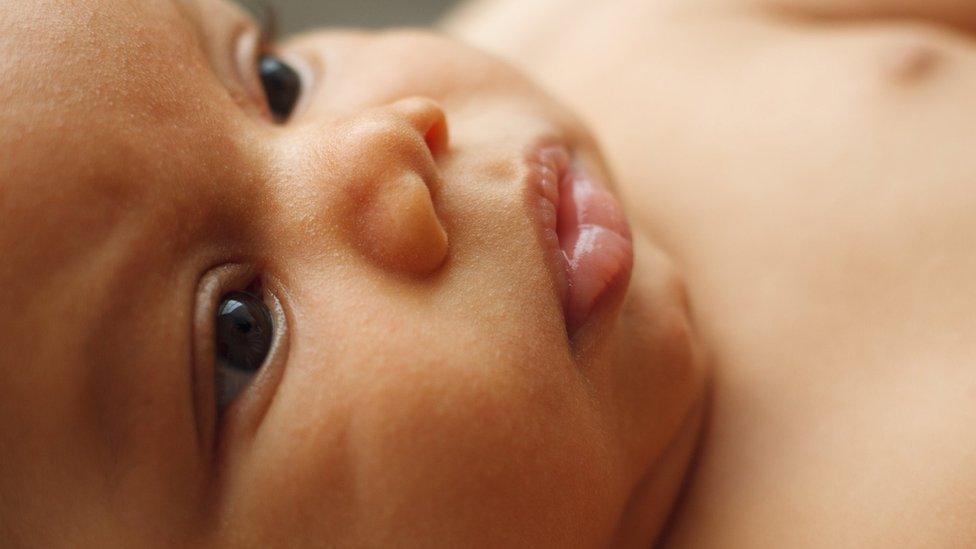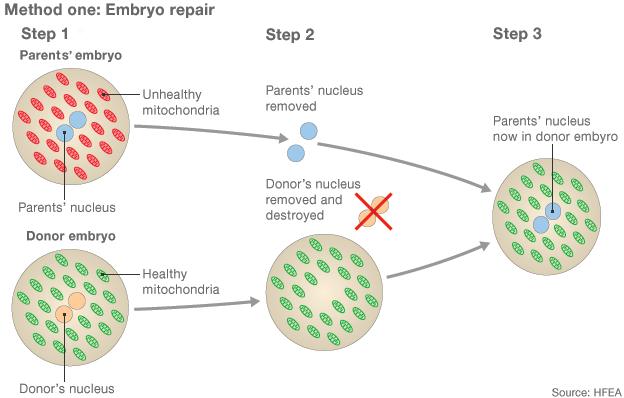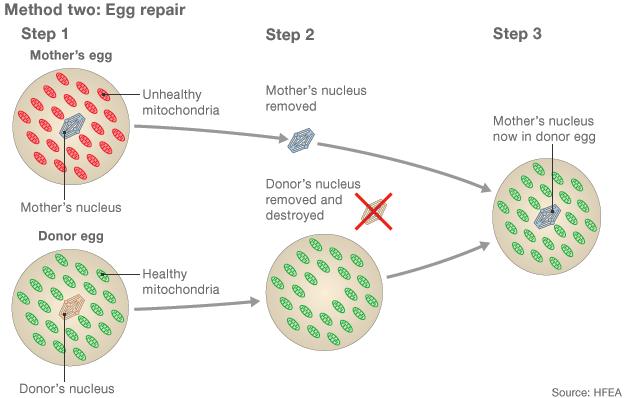Three-person baby licence granted
- Published

Doctors in Newcastle have been given the first UK licence to create babies from two women and one man, the fertility regulator says.
The advanced form of IVF will be used to prevent children dying from genetic diseases.
The team at the Newcastle Fertility Centre said it was "good news" and a "momentous day" for patients.
And realistically expect the first child to be born in 2018 at the earliest.
The procedure aims to overcome mitochondrial diseases which leave people with insufficient energy to keep their heart beating.
Some families have lost multiple children to the disease.
It is passed down from only the mother - so a technique using a donor egg as well as the mother's egg and father's sperm has been developed.
The resulting child has a tiny amount of their DNA from the donor, but the procedure is legal and reviews say it is ethical and scientifically ready.
Hannah explains why she will benefit from the three-person baby procedure
The UK Fertility Regulator, the Human Fertilisation and Embryology Authority, must approve every clinic and every patient before the procedure can take place.
The team in Newcastle anticipates helping 25 couples every year.
Prof Sir Doug Turnbull, the director of the Wellcome Centre for mitochondrial research at Newcastle University, said: "I am delighted for patients as this will allow women with mitochondria DNA mutations the opportunity for more reproductive choice.
"Mitochondria diseases can be devastating for families affected and this is a momentous day for patients who have tirelessly campaigned for this decision."
Three-person babies have been allowed only in cases where the risk of a child developing mitochondrial disease is very high.
How does it work?
Mitochondrial disease is caused by defective mitochondria - the tiny structures in nearly every cell that convert food into useable energy.
One in 4,300 children are born with such severe symptoms they develop muscle weakness, blindness, deafness, seizures, learning disabilities, diabetes, heart and liver failure. It is often fatal.
The aim of the procedure is to get the healthy mitochondria from the donor.
But mitochondria have their own DNA, which is why resulting children have DNA from three people.
However, everything that defines physical and personality traits still comes from parents.

1) Two eggs are fertilised with sperm, creating an embryo from the intended parents and another from the donors 2) The pronuclei, which contain genetic information, are removed from both embryos but only the parents' are kept 3) A healthy embryo is created by adding the parents' pronuclei to the donor embryo, which is finally implanted into the womb

1) Eggs from a mother with damaged mitochondria and a donor with healthy mitochondria are collected 2) The majority of the genetic material is removed from both eggs 3) The mother's genetic material is inserted into the donor egg, which can be fertilised by sperm.
However, the UK will not be the first country in the world to have children born through the three-person technique.
A Jordanian couple and doctors in New York performed the procedure in Mexico and the resulting baby is understood to be healthy.
Follow James on Twitter., external